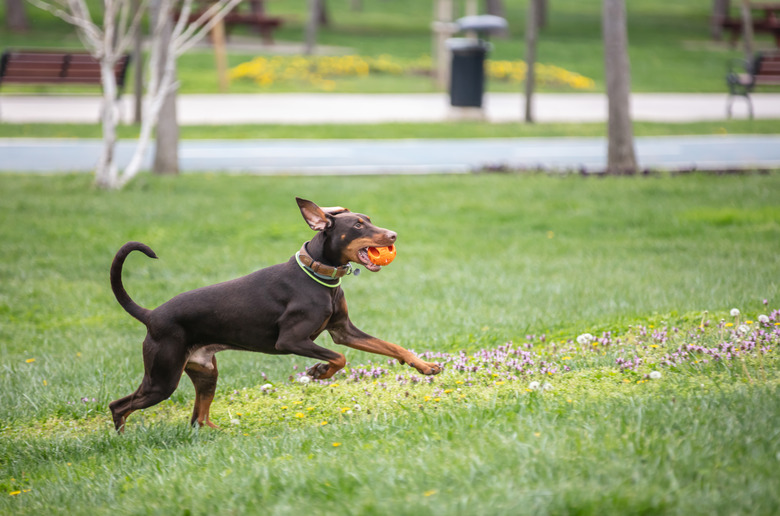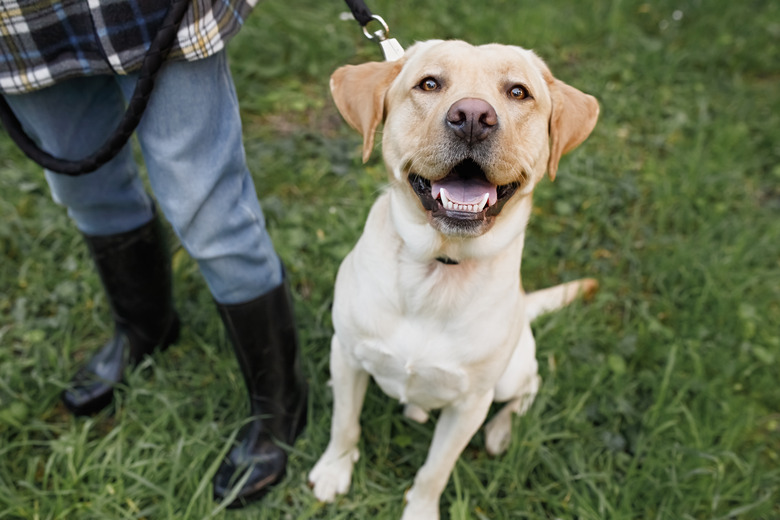Blood Clots In Dogs: Symptoms And Causes
A blood clot in a blood vessel, also called a thrombus, may form in any part of the body. Clots may develop as a result of several basic causes, such as if the lining of a blood vessel is damaged. The primary formation of blood clots in dogs is rare, but it is still a serious medical issue when it occurs. In some cases, dogs may have an underlying condition that causes excessive clotting. These might include an inflamed pancreas, cancer, heartworm parasite infection, or diabetes. Because blood clots may be fatal, if your dog displays any signs or symptoms of a blood clot, seek immediate veterinary care.
What are blood clots in dogs?
What are blood clots in dogs?
A blood clot is a mass of coagulated red blood cells. When a blood clot forms in the heart or in a blood vessel, such as the aorta, it's called thrombosis. The three basic reasons that thrombosis occurs are that the lining of a blood vessel is damaged, blood flow through an artery or vein is restricted, or a dog has an underlying medical condition that causes excessive clotting. In some situations, a clot (or part of it) may break loose and become lodged in another location in the body. This is called embolism.
Symptoms of blood clots in dogs
Symptoms of blood clots in dogs
The specific symptoms of a blood clot vary depending on where the clot is lodged.
Clots in the lungs
If a blood clot lodges in an artery of your dog's lungs, it prevents oxygenated blood from getting to the lungs. This condition is called pulmonary thromboembolism. Symptoms include sudden difficulty breathing, increased respiratory rate, pale or blue gums, and fatigue. Dogs may also cough and spit up blood.
Pulmonary thromboembolism is usually fatal. In some cases, the pet can recover with anticoagulants, such as heparin or warfarin, oxygen therapy, and rest. Your veterinarian will also need to treat any underlying cause of the blood clot. Common causes include heartworm disease, inflammatory conditions like pancreatitis, diabetes, kidney disease, cancer, heart disease, Cushing's disease, blood bacterial infections, and an autoimmune condition called immune-mediated hemolytic anemia (IMHA.) Clots often recur if the underlying cause is not fully resolved.
Clots in the heart
Symptoms of a blood clot in the heart, or aortic thromboembolism, include vomiting, paralysis, severe leg pain, abnormal gait, difficulty breathing, anxiety, and pale or blue pads or nail beds. Untreated, these clots can lead to complete heart failure.
Clots in the brain
Blood clots in the brain cause a vascular accident or stroke. Symptoms vary depending on where in the brain the clot is lodged. If the blood clot is located on the right side of the brain, you will see most symptoms on the left side of your dog's body and vice versa.
Clots in the telencephalon, or cerebral cortex, cause a loss of reflexes in the eye, loss of feeling in the nose, weakness, and seizures. You may also see a behavior called head pressing, when your dog will press their head against the wall or another object for no explainable reason.
Crossed eyes, back and forth eye movements, loss of eye reflexes, and head tilting are symptoms of a blood clot in the thalamus. Clots in the cerebellum cause a drunken gait, tremors, rigidness in the neck and body, twisting of the head up or back, and loss of eye reflexes. Symptoms of a blood clot in the brain stem include weakness in the legs, pain in the head and neck, altered consciousness, and loss of facial reflexes.
Dogs with underlying health issues, such as Cushing's disease or chronic kidney failure, can have high blood pressure, which predisposes them to having a vascular accident. Being on the urinary incontinence medication phenylpropanolamine can also cause a stroke, but this is rare.
Other blood clots
If the clot is blocking blood flow to organs in the genital or urinary systems, your dog may have blood in their urine. Vomiting and inability to control bowel movements or urination can be signs of a blood clot affecting abdominal organs, but these signs are more likely to be caused by something other than a clot.
If your veterinarian suspects your dog has a blood clot, they will perform blood tests that assess coagulation ability, such as prothrombin time and platelet levels along with other bloodwork and a urinalysis. Your dog might also need X-rays or a CT scan.
The bottom line
The bottom line
A blood clot is an accumulation of red blood cells. When a clot forms (or travels to) a location such as the lungs or in a blood vessel, it is a life-threatening situation. Thankfully, compared to humans, blood clots in veterinary medicine aren't as common. Some causes of blood clots in dogs are trauma (e.g., being hit by a car,) diabetes, tumors, or heart disease. Clinical signs depend on the clot's location but range from fatigue to trouble breathing, acting pained, or a staggering gait. Blood clots are treated with blood thinners, oxygen therapy, rest, and by addressing any underlying medical conditions.


